A Review of the exhibition ‘Pre-Raphaelite Sisters’ on at the National Portrait Gallery until 26th January and displaying many paintings by Evelyn De Morgan. Kindly contributed by De Morgan volunteer Gillian Collins.
There can’t be many people who have not heard of the Pre-Raphaelite Brotherhood (PRB), those self-styled ‘young painters of England’ intent on challenging the traditions and conventions in established art. Bold young men who found the traditions in painting as promoted by the Royal Academy (RA) lacking in vitality and vigour. Inspired by Florentine painting before the time of Raphael (hence their name), they wanted to see a return to a more ‘sincere’ style, bright colours and flatter perspective but with realistic rendering of people, a more naïve style, taking their subject matter from the world around them, religious and literary texts linking these to messages for contemporary life.
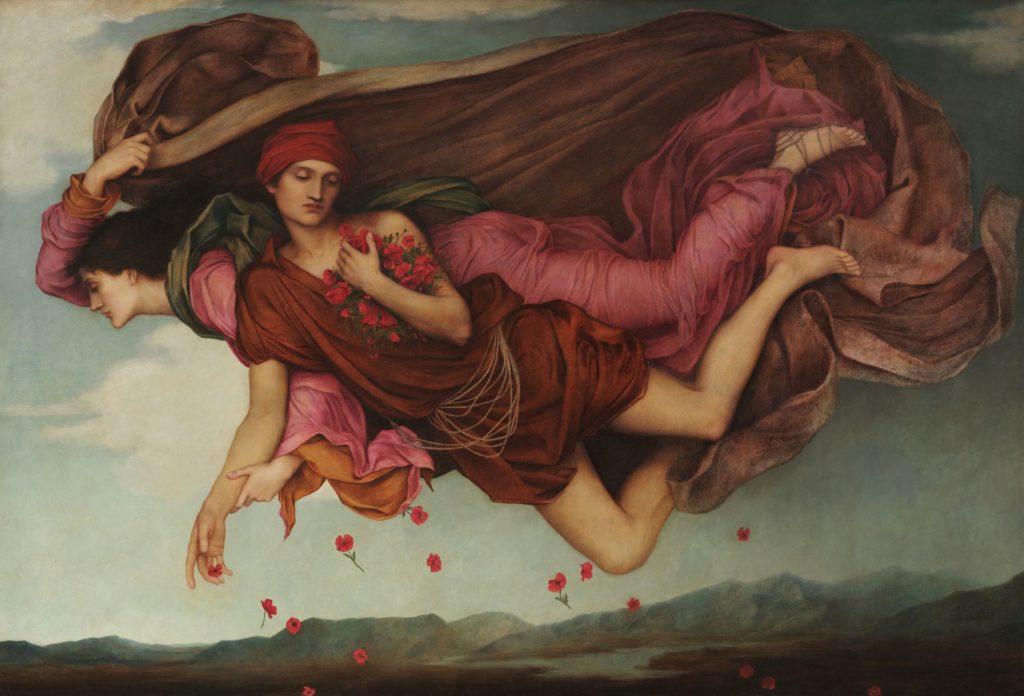
Night and Sleep by Evelyn De Morgan is a highlight of the exhibition
Women appear everywhere in Pre-Raphaelite art, not just any women, but the same small group of women. An exhibition at London’s National Portrait Gallery (NPG) takes a closer look at the women whose faces gaze out of the paintings, providing a glimpse into their lives. So who were they? Introducing the models, mistresses, wives and managers of the PRB: Elizabeth Siddal, Christina Rossetti, Effie Gray Millais, Annie Miller, Fanny Cornforth, Joanna Boyce Wells, Fanny Eaton, Jane Morris, Georgiana Burne-Jones, Maria Zambaco, Marie Spartali Stillman and Evelyn De Morgan. Despite moving in the same social and artistic circles not all of the women were well acquainted with each other. This exhibition seeks to throw the spotlight on to these women primarily through the artworks for which they modelled, but also through artworks created by some of the women themselves.
On entering the exhibition the visitor follows a route through several smaller galleries each devoted to one or two of the women. Part of the exhibition is hung in what would normally be a corridor, which is quite dimly lit and anticipates the intimate secrets about to be revealed. Halfway along this corridor is a small section dedicated to the men, each represented by a small banner on a pole which explains who they are and their connection to the women.
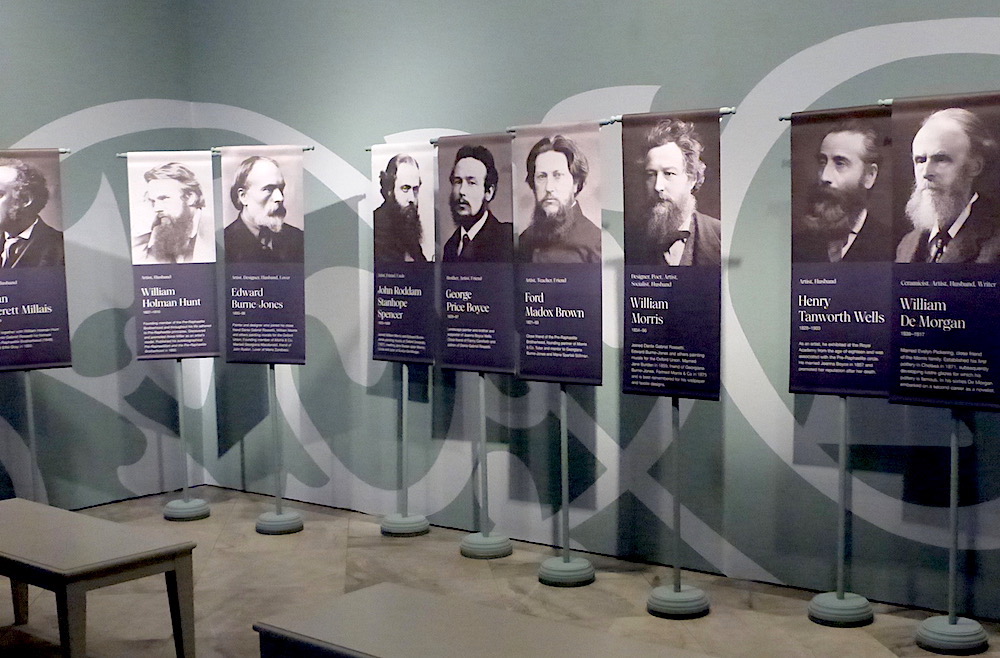
The Pre-Raphaelite Brothers at the National Portrait Gallery’s Pre-Raphaelite Sisters exhibition
On reaching the end of the corridor, the exhibition opens out into a large well-lit space dominated by three very large and beautiful paintings, on the left is The Beguiling of Merlin by Edward Burne-Jones and modelled by Maria Zambaco, the central painting is The Tree of Forgiveness also by Burne-Jones again modelled by Zambaco. These first two paintings are not without some controversy as Burne-Jones and Zambaco were lovers, indeed she had expected him to propose marriage, he didn’t. These two paintings show Zambaco in the female role, with Burne-Jones as the male participant. The final image to the right is The Day Dream by Dante Gabriel Rossetti. Jane Morris (wife of William) is the model cast by Rossetti as a ‘spirit of nature’, she gazes out of the painting into the distance, not quite catching the viewer’s eye. There is a frisson of sexual tension, Jane and Rossetti had an affair and as a further homage to his muse, Rossetti wrote a sonnet, also called The Day Dream inspired by their time spent together at their jointly rented home in the Cotswolds, Kelmscott Manor.
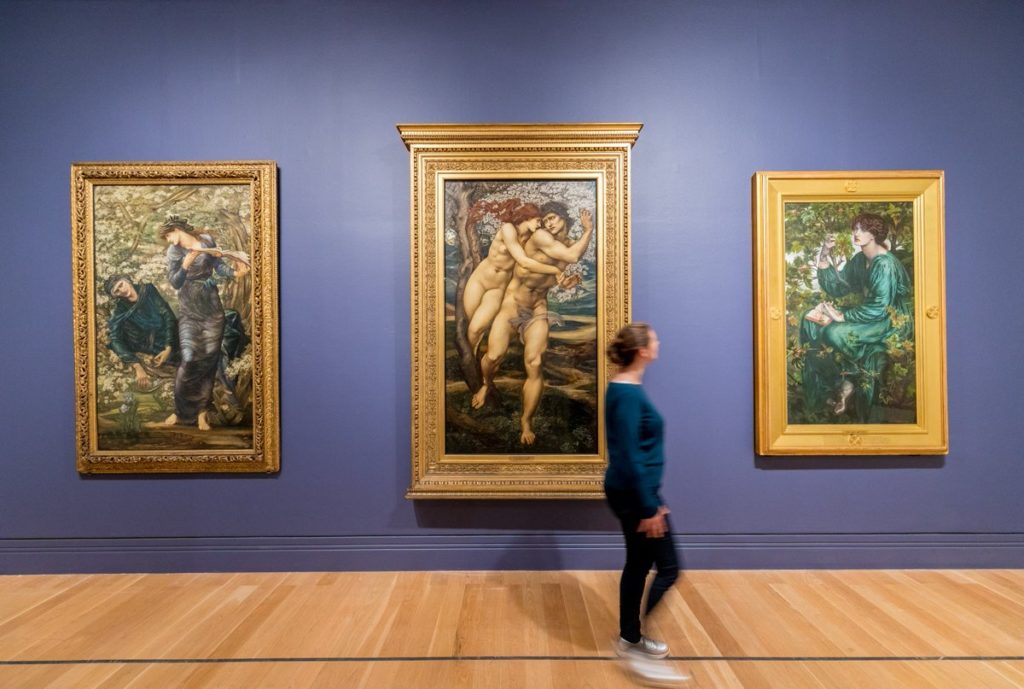
The Zambaco/Morris room at the National Portrait Gallery (C) National Portrait Gallery
The final room is dedicated solely to Evelyn De Morgan. While not a Pre-Raphaelite herself, Evelyn was greatly influenced by the style and knew the Morris’s through her husband, the ceramicist William De Morgan, the two couples were close friends. Evelyn was unusual in that she was a trained artist, having attended the Slade School of Art where she received the same classical education in drawing and painting as her male peers, her skill as a draughtswoman and understanding of the human form are outstanding. Her paintings have been described as “painted parables” through which she promotes her ideas about the Spiritualist life. Women are often central to her work and she is considered to be an early feminist.
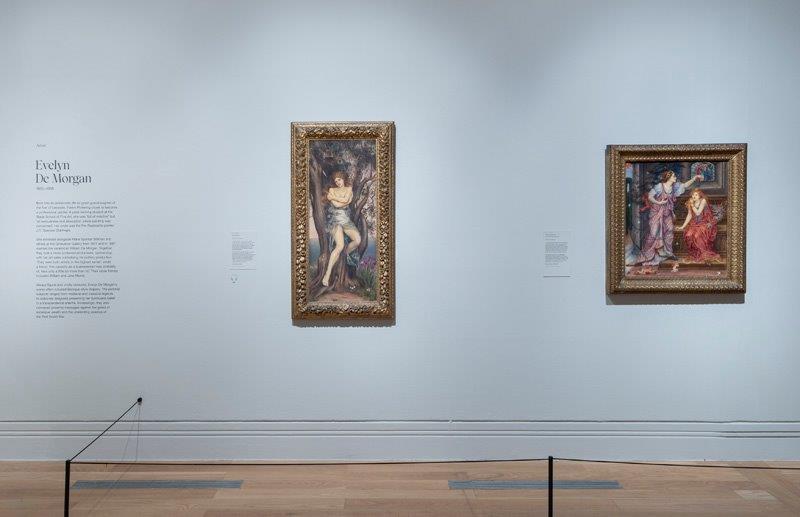
The Evelyn De Morgan Room in the exhibition, the Dryad on the left and Queen Eleanor and Fair Rosamund on the right.
There is an excellent catalogue available containing images of everything on display together with more in depth information about each of the women, including four excellent essays which help to set the scene and offer up a greater insight into the PRB and its wider influence.
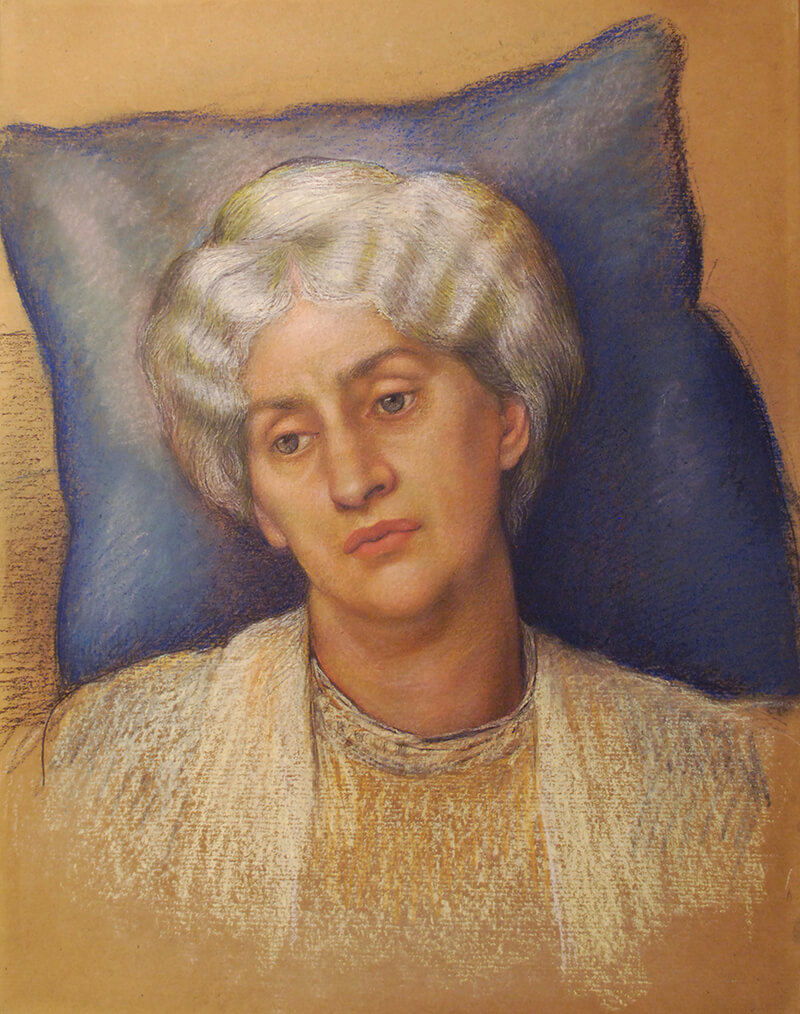
Jane Morris by Evelyn De Morgan which is included in the exhibition to demonstrate the friendship of the women
Pre-Raphaelite Sisters is at the National Portrait Gallery, London until 26th January 2020.





